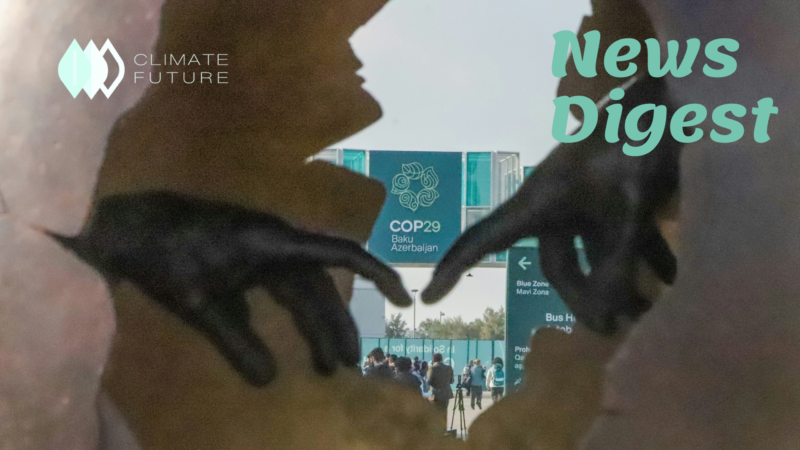World ‘at a crossroads’ as droughts increase nearly a third in a generation
The Drought in Numbers report was published during the 15th Conference of Parties (COP15) and UNCCD’s compendium of drought-related data and information helped to inform negotiations for the final results of the conference. The report reveals that climate, weather and water hazards from 1970 to 2019 resulted in 50% of disasters and 45% of disaster-related deaths are mostly in developing countries. Droughts accounted for 15% of natural disasters and caused approximately 650,000 deaths throughout the period. It triggered global economic losses of approximately $124 billion from 1998 to 2017 and it has increased 29% since 2000. Over 2.3 billion people are facing water stress and nearly 160 million children face severe droughts in 2022. Droughts have widespread, deep and underestimated impacts on ecosystems, societies and economies and 1.4 billion people have been impacted between 2000 and 2019. After flooding, droughts cause the greatest suffering on girls and women in developing countries regarding health, nutrition, sanitation, education and safety. According to the report, 72% of women and 9% of girls are struggling to collect water. The report presents a picture surrounding ecosystems by showing that the percentage of plants affected by droughts has doubled in the last 40 years with around 12 million hectares of land lost every year due to drought and desertification. It is expected that climate change can increase the risk of droughts in many vulnerable regions around the world, especially with vulnerable populations, rapid population growth and challenges for food security.
Climate: World getting ‘measurably closer’ to 1.5-degree threshold
The Global Annual to Decadal Climate Update reveals that the year between 2022 to 2026 will become the warmest on record. The chance of that period is higher than the last five years from 2017-2021. The 1.5 °C target is the goal of theParis Agreement that warns the countries to take climate action to reduce greenhouse gas emissions to limit global warming. The chance of temporarily exceeding the 1.5°C threshold has increased steadily since 2015 according to the report produced by the United Kingdom’s Met Office where the WMO lead center for climate update predictions. It was close to zero back then but the probability rose to 10% over the past five years and almost 50% for the period from 2022-2026. The Paris Agreement briefs the long-term goals which guide governments to limit the global temperature increase to below 2 °C while persuading efforts to limit the rise to 1.5 °C. The UN’s Intergovernmental Panel on Climate Change states that climate-related risks are bigger than global warming of 1.5 °C than at present, but lower than at 2 °C.
2022 ISIF Asia Grants now open for applications
The deadline to submit proposals for the 2022 round of ISIF Asia grants is being extended by two weeks to May 31.
Make sure you don’t miss out!
https://isif.asia/apply/
Organizations based in the Asia Pacific are eligible to apply. Projects fall into three key areas:
Infrastructure initiatives to increase Internet speed, reduce maintenance and operational costs, and improve reliability and/or security.
Inclusion initiatives that help ensure everyone has meaningful access to the Internet, online applications and services.
Knowledge initiatives that develop technical capacity and/or research around Internet network operations for technical and non-technical audiences.
In 2022, ISIF Asia will also include grants across all three programs to support innovative solutions to the environmental impact of the Internet. The Ian Peter Grants for Internet and the Environment commemorate the life and work of Ian Peter, Internet pioneer and environmental activist.
ISIF Asia’s IPv6 Deployment Grants are also open for organizations planning to deploy IPv6 in the Asia Pacific. IPv6 Deployment Grants range between USD 30,000 and USD 250,000.

UN joins faith-based initiative for shift towards climate-responsible finance
The UNEP, the World Council of Churches (WCC), Muslim Council of Elders and NY Board o Rabbis have all signed the Climate-Responsible Finance which is a moral responsibility and imperative to all children and the living world. The signatories agreed to review their banking, pension, insurance and other financial service agreements to make sure evidence-based accountability. The initiative suggests making investment portfolios to meet net-zero GHG emissions by 2050. Apart from researching climate solutions and investing in renewable energy, it encourages the European Union and the Organization for Economic Co-operation and Development to achieve financial services and exposure to coal no later than 2030. It also advocates to stop all financing towards any new extraction projects and oil and gas exploration to end all new development projects after this year. The joint appeal calls upon financial service providers to take effective and urgent action to change fossil fuel financing and invest in climate solutions through research and renewable energies.
Natural resources must be ‘part of the solution’ in fight against deforestation
The Global Forest Resources Assessment Remote Sensing Survey warned that the earth’s tropical rainforests face a tremendous threat from livestock grazing in South America to the expansion of croplands in Asia. The survey revealed that from 2000 to 2010, annual deforestation decreased by around 29% from 11 million hectares per year. In addition, net forest area losses were more than 50% during the survey period from 6.8 million hectares yearly between 2000 and 2010 to 3.1 million hectares each year from 2010 to 2018. Between 2000 and 2018, the highest level of deforestation happened in South America with 68 million hectares, followed by Africa with 49 million hectares. During that period, tropical forest losses resulted in over 90% of global deforestation. Cropland expansion is the main reason for deforestation, responsible for almost half of global deforestation, followed by livestock grazing with 38.5%. Furthermore, oil palm planting accounted for 7% of world deforestation during that period. The survey also shows that tropical regions of Central America are extremely threatened by land-use conversion.



